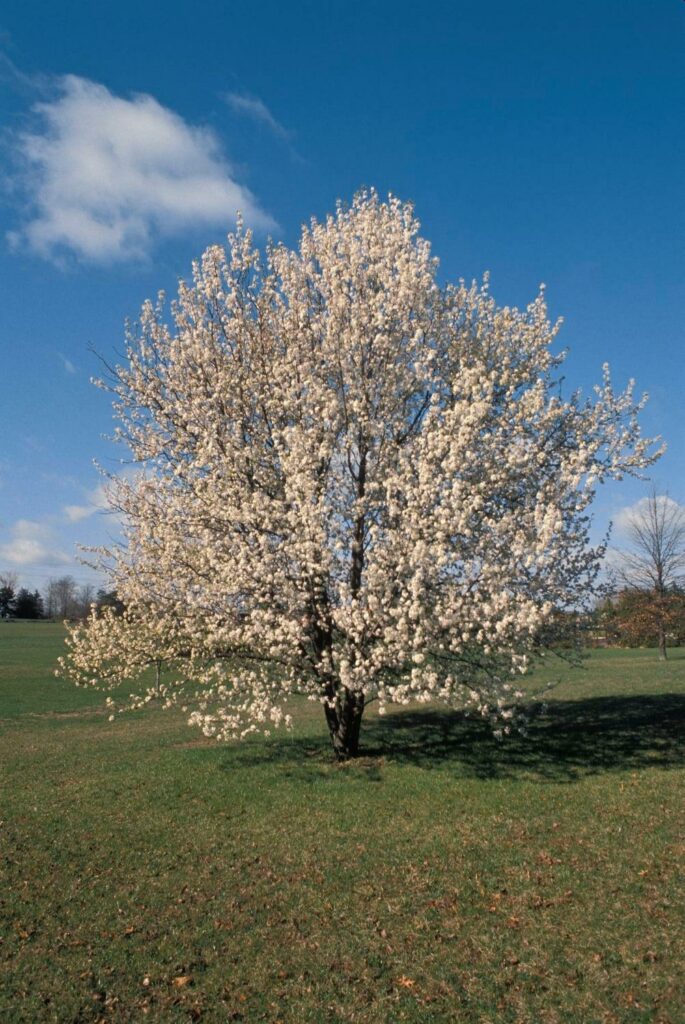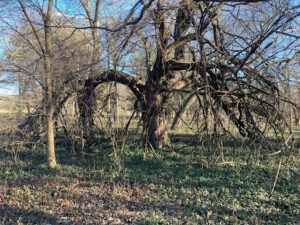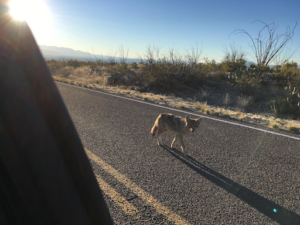#treeoftheweek is #callerypear Each April, like a spring snow storm, a thick blanket of brilliant white flowers covers the trees lining many of Missouri’s major highways, and each spring it seems to grow thicker and wider. To the untrained eye this is a treat, one of the first shows of spring to assure us that winter has indeed passed. To those who know its cause it is a cruel reminder that each year we lose more and more ground to the enemy. Each small white flower is a potential seed, each tree holding enough to claim another acre or more. This is the annual blooming of the Callery pear (Pyrus calleryana), when for a few weeks it becomes obvious what an enormous problem its invasion has become.
The problem is most visible along these interstate corridors but it is by no means confined to them. Callery pear will grow nearly anywhere, in dry rocky sites or wet ones, in poor or rich soil. It produces abundant fruit, which birds devour and spread far and wide, dispersing the seeds that sprout so readily. The tree’s tough, leathery leaves withstand both hot and cold temperatures as well as drought, and linger deep into the fall. It is extremely resistant to disease and fast growing. These features were once considered outstanding landscape traits. They now make Callery pear one of our most troublesome invasive species.
This unfortunate story began with the introduction of the notorious ‘Bradford’ cultivar in the 1960’s. It was, as so many invasive species seem at first, “the perfect plant.” It was just the right size for streets and suburban lawns, fruitless (‘Bradford’ pears are self-incompatible, they cannot fertilize their own flowers like most pears), and with a stunning floral display (if you don’t mind the smell of rotting fish it gives off). The illusion didn’t last long. It became apparent that the ‘Bradford’ cultivars had a tendency to form poor branch attachments that were prone to breakage. Fruit formation also began to occur, as other varieties of pear nearby were able to fertilize the ‘Bradford’ flowers. The nursery trade was not willing to give up on Callery pear though. They decided what they needed were simply better cultivars.
So the ‘Cleveland’ pear, the ‘New Bradford,’ the ‘Aristocrat’ and a slew of other varieties appeared. While some of them were structurally superior to ‘Bradford,’ they compounded the fruiting problem with each new release. While self-incompatible, these varieties can fertilize each other. The resulting hybrids typically revert to the pear’s wild form, a densely branched tree bristling with thick one-inch thorns. It is these nasty offspring that line our highways, invade our unmowed fields, and generally create a nuisance anywhere a landscape is not diligently maintained. Removing them is a prickly nightmare and they spread faster than we can kill them.
Despite this, these arboreal fiends remain some of the most popular trees in the nursery trade. Economics trumps ecology – Callery pear is easy to grow and easy to sell. It is one of many plants with well established invasive tendencies (Wintercreeper and Burning Bush being other prime offenders in our area) that remain nursery mainstays. They spread across the land on their own as well as by human effort, choking out native flora and fauna. Only legislation will stop their sale, and only dedicated eradication efforts will stop their spread.
Learn more about what you can do to help stop the spread of these nasty nuisance plants by visiting the Missouri Invasive Plant Task Force: https://moinvasives.org/Photos courtesy of the Missouri Department of Conservation.




